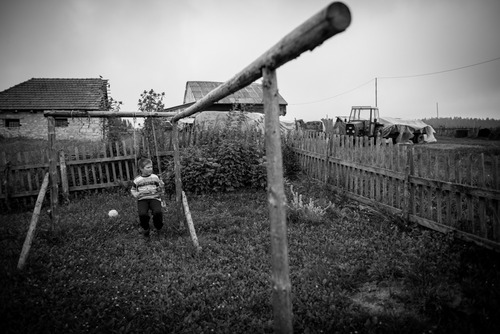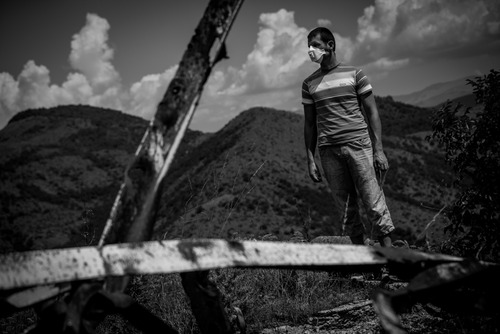From Kosovo, Where Christian Werner's Investigations on Depleted Uranium in the Balkans Begins
KOSOVO - “Our plane touched down in Pristina, the capital of Kosovo. According to NATO figures, 10 tons of depleted uranium (DU) ammunition were dropped on Kosovo during NATO’s three month long intervention in 1999. Since information about the use of DU in Serbia, Bosnia and Herzegovina, and Montenegro is even more scarce, Kosovo seemed a good starting point for our research.
Gjakova, Kosovo – In the 1999s the area around Gjakova was heavily targeted by A10 Warthogs with depleted Uranium. A former military site in Gjakova was hit by 30mm DU ammunition. In the bullet holes one can measure double the amount of normal radiation.
Radioactive waste produced in the process of generating nuclear power, DU is the stuff that we don’t know where to store. The military came up with the idea to use this waste material as a powerful weapon. It is a very dense metal - twice as dense as lead - so a standard 30mm-round of DU-mantled ammunition can pierce heavy armor like tanks or bunkers. DU poses long-term hazards long after peace has been achieved, and unlike mines for instance, cannot be physically cleared away.
Han Pijesak, Bosnia – According to the official NATO map this city was surronded by DU targeting locations. Cancer is increasing highly in this area. The son of Suzana Todorovic, affected by skin cancer, in the contaminated garden.
The problem is that on impact, DU rounds vaporize. The resulting aerosol that spreads during the explosion of ammunition is highly toxic and radioactive. All this is well known, as are the effects of radiation and toxic material on the human body. Still, when NATO finally admitted that it had used DU during the Balkan wars in the 1990s, barely any media coverage traced the legacy of this weapon.
In 2012, I covered the possible long-term effects of DU, such as various forms of cancers and congenital malformations, in Iraq. When Magnum Foundation gave me the opportunity to further investigate the usage of DU in the Balkans, I decided to partner with a writer. This time, I wanted to not only return with photographs depicting the horrors of DU, but also a wider investigation of the political circumstances and the current state of scientific research. I got in touch with Marius Munstermann, who had already been to Kosovo before and was trying to figure out why so little was known about the circumstances surrounding the usage of DU in the Balkans.
Banjska, Kosovo – Nikola Radojković, 19, was hit by a DU shrapnell when he was five years old. He developed cancer and has had 11 operations. Near to the village Banjska a transmission tower was shot by NATO in 1999. The steel of the tower is riddled with bullet holes. The only weapon that can cause such precise bullet holes is depleted uranium. Measurements with a Geigercounter showed a two times higher increase in CMP then the natural radiation.
Albanians in Kosovo regard NATO as a liberation army that helped them fight Serbian oppression. Although Kosovo declared independence in 2008, today Europe’s youngest nation still effectively depends on an interim government and aid from foreign donors. So just as Marius experienced before, it turned out to be pretty difficult to find people who were willing to talk about this issue. But after three determined weeks working in the field, we have now met what seems like every single expert on the topic of DU in the Balkans.”
- Christian Werner, 2014 Emergency Fund Grantee



